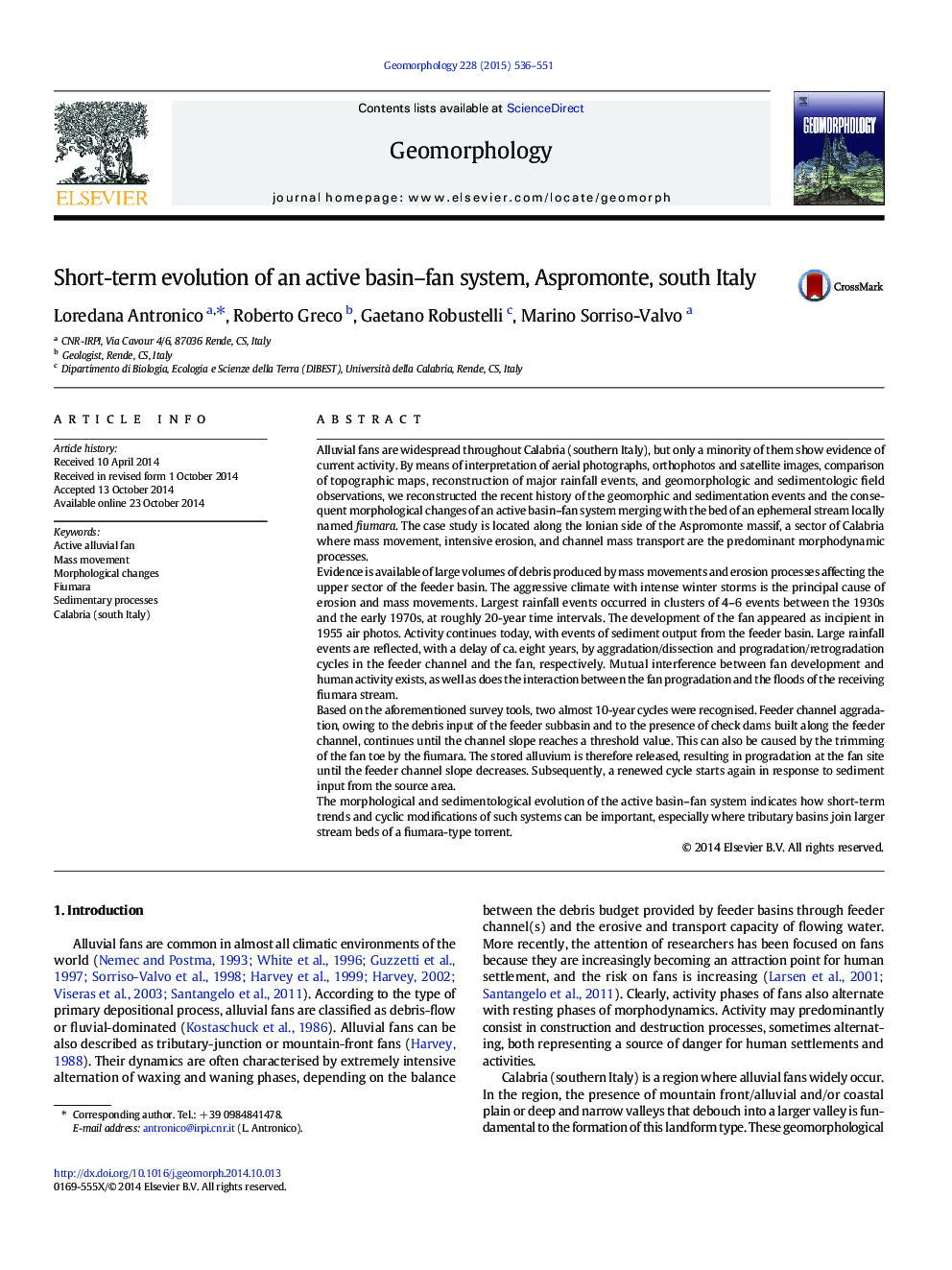| کد مقاله | کد نشریه | سال انتشار | مقاله انگلیسی | نسخه تمام متن |
|---|---|---|---|---|
| 6432307 | 1635421 | 2015 | 16 صفحه PDF | دانلود رایگان |

- We reconstruct the recent geomorphological history of a basin-fan system.
- We recognise the nature of current sedimentary processes on fan and feeder channel.
- Results show that the fan/feeder channel dynamics are strictly related and cyclical.
Alluvial fans are widespread throughout Calabria (southern Italy), but only a minority of them show evidence of current activity. By means of interpretation of aerial photographs, orthophotos and satellite images, comparison of topographic maps, reconstruction of major rainfall events, and geomorphologic and sedimentologic field observations, we reconstructed the recent history of the geomorphic and sedimentation events and the consequent morphological changes of an active basin-fan system merging with the bed of an ephemeral stream locally named fiumara. The case study is located along the Ionian side of the Aspromonte massif, a sector of Calabria where mass movement, intensive erosion, and channel mass transport are the predominant morphodynamic processes.Evidence is available of large volumes of debris produced by mass movements and erosion processes affecting the upper sector of the feeder basin. The aggressive climate with intense winter storms is the principal cause of erosion and mass movements. Largest rainfall events occurred in clusters of 4-6 events between the 1930s and the early 1970s, at roughly 20-year time intervals. The development of the fan appeared as incipient in 1955 air photos. Activity continues today, with events of sediment output from the feeder basin. Large rainfall events are reflected, with a delay of ca. eight years, by aggradation/dissection and progradation/retrogradation cycles in the feeder channel and the fan, respectively. Mutual interference between fan development and human activity exists, as well as does the interaction between the fan progradation and the floods of the receiving fiumara stream.Based on the aforementioned survey tools, two almost 10-year cycles were recognised. Feeder channel aggradation, owing to the debris input of the feeder subbasin and to the presence of check dams built along the feeder channel, continues until the channel slope reaches a threshold value. This can also be caused by the trimming of the fan toe by the fiumara. The stored alluvium is therefore released, resulting in progradation at the fan site until the feeder channel slope decreases. Subsequently, a renewed cycle starts again in response to sediment input from the source area.The morphological and sedimentological evolution of the active basin-fan system indicates how short-term trends and cyclic modifications of such systems can be important, especially where tributary basins join larger stream beds of a fiumara-type torrent.
Journal: Geomorphology - Volume 228, 1 January 2015, Pages 536-551